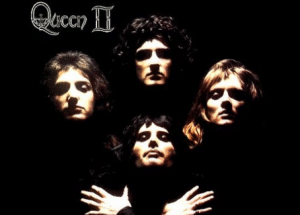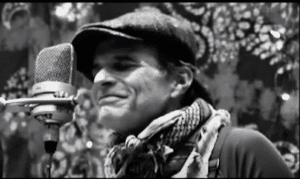5 Iconic Country Songs That Are Set In Texas

via George Strait / Youtube
Texas. The Lone Star State. A land of wide-open spaces, big dreams, and even bigger personalities. It’s a place that practically functions as a country unto itself, with its own unique culture, traditions, and way of life.
And what better way to capture the essence of Texas than through the soulful melodies and poignant lyrics of country music?
From sun-drenched plains to bustling honky-tonks, Texas towns and cities have served as backdrops for countless country classics. These songs weave tales of love and loss, struggle and triumph, all against the backdrop of the Lone Star State’s unforgettable landscapes and vibrant communities.
In this blog post, we’ll be exploring five iconic country songs that pay homage to Texas. Each song offers a glimpse into the diverse spirit of the state, from its wide-open spaces and charming small towns to its larger-than-life characters and undeniable sense of pride.
1. Marty Robbins – “El Paso” (1959)
Marty Robbins, already a rising star in the pop and country scene, surprised everyone with “El Paso” in 1959. While enjoying success on both charts, his label doubted a gunfighter ballad album would be commercially viable.
Despite their concerns, “El Paso” was born during a spontaneous road trip, with the song’s full narrative forming in Robbins’ mind as his wife drove them home.
Recorded in a single day, “El Paso” reflects a raw and direct musical approach. Its unconventional length, exceeding four minutes, defied industry norms and paved the way for longer radio hits. The song’s impact was undeniable, becoming the first country song to top the pop charts and earning Robbins the first-ever Grammy Award for country music.
“El Paso” stands as a testament to the power of artistic vision and the ability of music to transcend boundaries. Its enduring popularity continues to captivate audiences with its captivating story and timeless Western charm.
2. George Strait – “Amarillo by Morning” (1982)
George Strait may not have penned “Amarillo by Morning”, but his choice and execution of the song cemented its place in country music history. The original, composed by Terry Stafford and Paul Fraser, emerged from a spontaneous moment of inspiration.
Stafford, returning from a rodeo gig in San Antonio, saw an advertisement for overnight delivery, sparking the song’s central theme of leaving a town by morning.
Fraser, fueled by the idea, wrote the song in just an hour at his kitchen table. Stafford added a distinct 70s country pop touch with a xylophone and backing singers, releasing his version in 1978. While it reached No. 31 on the country charts, the song’s true potential was yet to be realized.
Strait’s 1982 cover stripped back the orchestration, opting for a simpler, more direct approach that resonated deeply with audiences. This understated style, a hallmark of Strait’s neo-traditionalist sound, perfectly captured the song’s sentiment and propelled it to No. 4 on the charts. Though not his only chart-topper, “Amarillo by Morning” became Strait’s signature song, forever linked to his unique brand of country music and the spirit of Texas itself.
3. Waylon Jennings with Willie Nelson – “Luckenbach, Texas (Back to the Basics of Love)” (1977)
While the yearning for a simpler life is a timeless human sentiment, “Luckenbach, Texas (Back to the Basics of Love)” takes it to a whole new level. The song, penned by Chip Moman and Bobby Emmons, paints a picture of characters seeking escape from the pressures of modern life by retreating to the idyllic town of Luckenbach, Texas.
Interestingly, neither the songwriters nor Waylon Jennings, who performed the hit with Willie Nelson, had ever actually visited Luckenbach at the time of writing. This adds a layer of irony to the song, as the “simpler life” they sing about is essentially a romanticized fantasy.
Nelson’s unplanned appearance in the studio led to his iconic contribution to the song. Jennings, perhaps feeling self-conscious about name-dropping himself in the lyrics, welcomed Nelson’s collaboration. While the song became a hit, Jennings himself reportedly expressed dislike for it, even instructing his drummer to remind him not to choose it for future performances.
Meanwhile, the real Luckenbach, once a quiet town with just two wooden buildings, has ironically transformed into a popular tourist destination, catering to the very “escape” the song romanticizes.
4. Robert Earl Keen – “Corpus Christi Bay” (1993)
Robert Earl Keen’s “Corpus Christi Bay” draws inspiration from the singer-songwriter’s own experiences in the oil industry. His father worked in the field, and Keen himself spent summers during college and after as a roughneck and derrick man. While he wouldn’t necessarily recommend it, these experiences clearly left a lasting impression.
The song is heavily autobiographical, reflecting on Keen’s time working on the oil rigs in Corpus Christi. He describes the grueling schedule, working seven days a week with no breaks. This constant work took its toll, leading to exhaustion and a sense of isolation.
However, Keen’s brother, who lived in Corpus Christi, served as a counterpoint to this monotonous routine. He encouraged Keen to break free from the work cycle and enjoy life outside the oil rigs. Their nights were filled with wild escapades, a stark contrast to the harsh realities of their day jobs.
Keen’s recent retirement from touring marks the end of an era, but his music continues to resonate. The release of his box set, featuring a graphic novel and other memorabilia, offers a deeper look into the stories behind his songs, including “Corpus Christi Bay” and the experiences that shaped them.
5. Jimmy Dale Gilmore – “Dallas” (1972)
“Dallas,” penned by Jimmy Dale Gilmore, is a song steeped in the history of the legendary band, The Flatlanders. Formed in 1972, the trio of Gilmore, Joe Ely, and Butch Hancock blended their diverse musical styles, laying the groundwork for what would later be known as Americana. Their music seamlessly combined elements of rock, folk, and country, creating a unique and captivating sound.
Despite its groundbreaking nature, the song’s journey was far from smooth sailing. Originally intended as the promotional single for their self-titled debut album, “Dallas” failed to gain traction, leading to the album’s shelvement.
The song itself was conceived by Gilmore during a flight into Dallas. He described feeling a mix of emotions about the city, and these feelings gradually formed the foundation of the song. However, Gilmore has expressed a complex relationship with “Dallas”, admitting to periods of dissatisfaction and rediscovery as he revisits the song through different perspectives.
Despite its initial struggles, the iconic track has gained recognition over time. The Flatlanders’ album was eventually re-released 18 years later, coinciding with the rise and fall of cowpunk music. Today, “Dallas” stands as a testament to the band’s pioneering spirit and their enduring influence on the Americana genre.
















